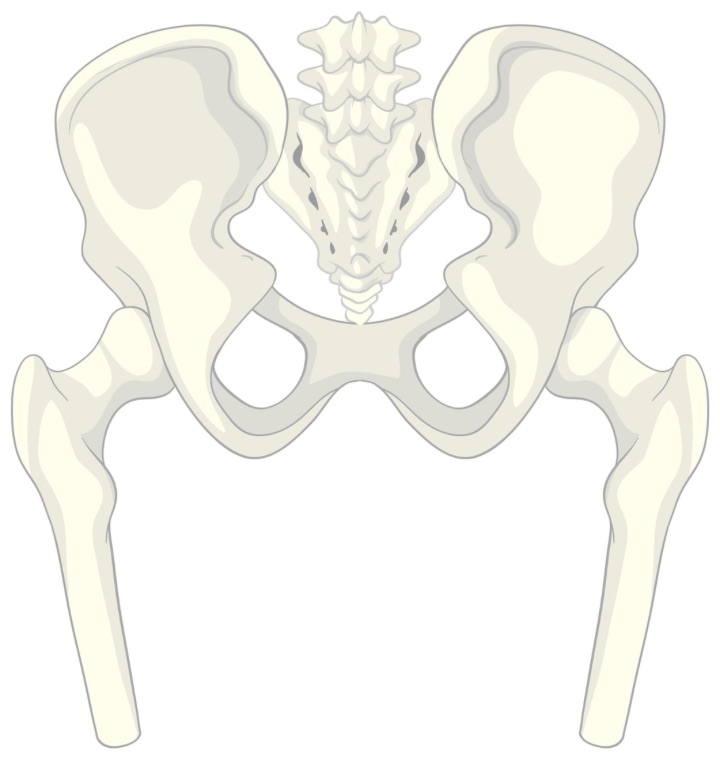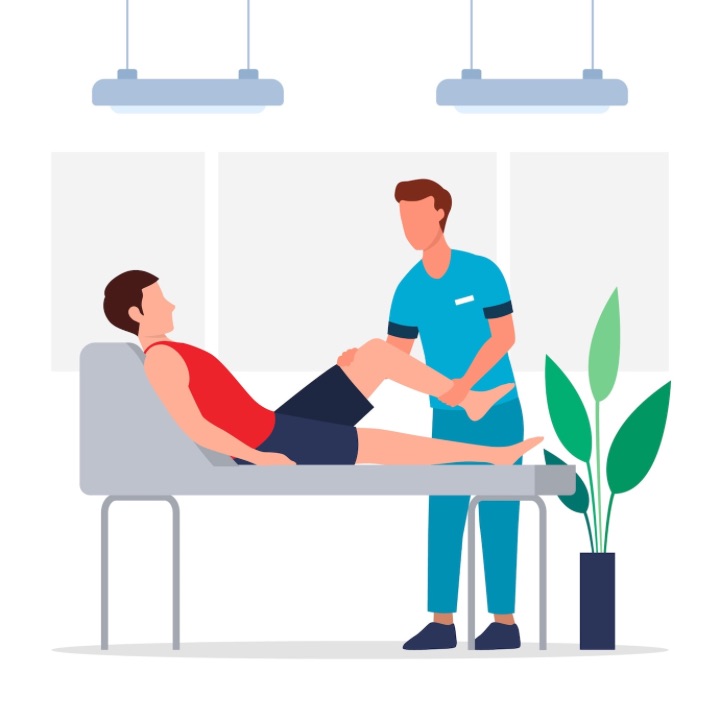Slipped Capital Femoral Epiphysis (SCFE) is a condition where the growth plate of the thighbone (femur) slips backward and rotates inward. It usually occurs in adolescents between 11 and 16 years old, but can also occur in those who are younger or older than that range.
If left untreated, SCFE can cause pain, difficulty walking, and damage to the hip joint. Fortunately, with proper diagnosis and treatment, most people with stable SCFE can return to normal activities without any long-term complications.
In this article, we’ll discuss what causes SCFE, its symptoms and diagnosis process, treatments available for it, potential complications from it, prognosis for recovery after treatment, how to cope with having unstable SCFE as well as tips on living with SCFE.
Did you know that SCFE is a condition where the femoral neck and head slips off its normal position from the acetabulum? This can cause hip pain and other symptoms of hip disorder.
Early detection is key, as well as activity modification and lifestyle changes. Pain management through medications or exercise therapy may also be used to reduce pain.
By understanding this condition, it’s possible to take steps towards managing it properly. Your doctor can help you determine what treatment options are best for you based on your individual needs.
Exercise therapy is an important part of managing SCFE, and your doctor can recommend exercises that will help improve flexibility and strength in the hips.
Lifestyle changes such as avoiding certain activities or maintaining a healthy weight can also help manage symptoms associated with SCFE. With proper care and early detection, living with SCFE doesn’t have to be difficult or painful!
You may be wondering what factors contribute to a slipped proximal femoral epiphysis. SCFE is caused by an unstable gait pattern, delayed diagnosis, overweight children, adolescent obesity, and a sedentary lifestyle.
Unstable gait patterns can cause the hip joint to shift out of its normal position, leading to a large force on the growth plate in turn causing a severe slip.
Delayed diagnosis can lead to further damage to the joint if it is not treated properly in time.
Overweight children are at high risk due to increased pressure on their joints while walking or running.
Adolescent obesity is another contributing factor due to excessive stress on their bones, ligaments and cartilage.
Lastly, a sedentary lifestyle without enough physical activity increases the risk as well since it puts less strain on the joints when compared with active lifestyle.
Experiencing a sudden, sharp pain in the hip and thigh area could be a sign of slipped capital femoral epiphysis (SCFE), which is a condition where the ball portion of the upper leg bone slips backward out of its normal position.
Other symptoms to look out for include limping, difficulty walking or standing, swelling and tenderness around the hip joint, lack of hip flexion and an outwardly rotated thigh.
If you’re suffering from any of these symptoms, it’s important to seek medical attention right away.

Photo Credit: brgfx, Freepik
Pain management can help reduce inflammation, while emotional support can help cope with any stress or fear.
Physical therapy and nutrition advice for overall health are necessary to regain strength and mobility in your hips.
Exercise tips should also be followed regularly to ensure full recovery.
Lastly, seeking professional help from an orthopedic specialist is recommended for the best results in treating SCFE. If left unchecked it may lead to bilateral hip replacement.
A doctor may diagnose a sharp hip and thigh or knee pain as resulting from an abnormal shifting of the upper leg bone, known as slipped capital femoral epiphysis (SCFE). Early diagnosis of the onset of symptoms is crucial to minimize the risk of further complications.
A physical examination and imaging tests such as an X-ray, where femoral metaphysis can be seen, or MRI are used by a doctor to confirm SCFE. Risk factors for developing SCFE include obesity, growth spurts, genetic conditions, endocrine disorders, and trauma. SCFE is usually more common in boys than girls.
It’s important to schedule regular doctor visits so that any signs of SCFE can be identified quickly before it progresses further. During these consultations, a doctor will also take a physical exam and review the complete medical history of the patient in order to gather information about possible risk factors for severe SCFE.
Checking for obligatory external rotation can be a sign of SCFE. If necessary, imaging tests may also be performed to make an accurate diagnosis.
With prompt treatment and proper care, patients with SCFE can experience improved quality of life.
Treatment for an abnormal shifting of the upper leg bone can help reduce pain and improve quality of life. For slipped capital femoral epiphysis (SCFE), a combination of physiotherapy, lifestyle changes, orthopedic surgery, medication management, and weight control are often used.
Physiotherapy focuses on strengthening the muscles around the hip to support proper alignment. Lifestyle modifications such as avoiding certain activities or wearing supportive braces can also be beneficial.

Photo Credit: Freepik
Sometimes orthopedic surgery is performed to correct the angle between the thighbone and hipbone and stabilize the joint if other treatments do not work.
Medication management is important to manage pain and inflammation while weight control is essential in order to reduce stress on joints.
With these treatments, SCFE can become manageable with minimal long-term implications on mobility.
Preventing misalignment of the upper leg bone can help avoid certain pain and mobility issues. Slipped capital femoral epiphysis (SCFE) is a condition that affects adolescents, particularly those who are overweight or obese.
Early detection with regular physical exams is key to preventing SCFE and incorporating lifestyle changes such as dietary modifications, regular physical activity and even yoga.
Additionally, medical management may be necessary for some individuals at risk of developing SCFE in order to ensure proper growth and development.
Physical therapy can also play an important role in helping those affected by SCFE manage their symptoms and live an active life without fear of further injury.
Prevention of SCFE requires a multidisciplinary approach and should involve close monitoring by parents, teachers, coaches, healthcare providers, dietitians, and other healthcare team members.
If you or a loved one have been diagnosed with SCFE, it’s important to understand the potential complications that may arise. Delayed diagnosis can lead to long-term pain, decreased range of motion, and the need for further surgery.
Treatment options include:
1. Lifestyle changes such as weight loss if the child is obese.
2. Physical therapy to help regain strength and mobility.
3. Surgery for more serious cases to realign the hip bones and pin them in place.
No matter the treatment option, taking preventive measures such as regular physical activity and healthy eating habits should be discussed with your doctor. These steps can help reduce the risk of developing SCFE in the first place and manage any symptoms once they do develop.
Early diagnosis and treatment of SCFE can lead to a good prognosis and improved quality of life. Falls and activity should be closely monitored, as even minor injuries can cause the condition to worsen.
Growth disturbances may occur in severe cases; however, physical therapy can help with mobility and strength. Mental health must also be addressed since dealing with a chronic condition is often emotionally difficult.

Photo Credit: ijeab, Freepik
Finally, lifestyle changes should be implemented for long-term success, such as avoiding high-impact activities or wearing protective gear during sports. With the right approach, patients with SCFE can manage their symptoms and live active lives.
Coping with SCFE can be challenging, but with the right support and lifestyle changes, managing your symptoms and living an active life is possible.
Many coping strategies and treatments are to prevent the rapid onset of pain and discomfort associated with SCFE. These include emotional support from family and friends, physical therapy, lifestyle modifications like regular exercise, stretching, or yoga, and diet modifications.
Finding outlets for stress relief like relaxation techniques or creative activities can also be beneficial.
Working closely with a healthcare team of specialists is also important in order to develop an individualized plan of care tailored to your needs. With their help, you can create achievable goals in order to find a balance between activity and rest while managing the condition.
Living with SCFE can be difficult, but taking the right steps can manage your symptoms and live an active life. Here are some tips for dealing with it:
The exact cause of SCFE is unknown, but it’s often associated with adolescent growth spurts and obesity.
Symptoms of SCFE include a limp, hip pain, or knee pain. The affected leg might be turned outward compared to the normal leg.
The treatment of choice for SCFE is surgical intervention, typically involving placing screws across the growth plate to prevent further slippage.
The greatest risk factor for SCFE is obesity. Other risk factors include being male, certain genetic conditions, and undergoing rapid growth during puberty.
Slip Capital Femoral Epiphysis is diagnosed through X-rays, specifically lateral views of the hip. These images can help determine the severity of the slip and any associated complications.
The goal of treatment for slipped capital femoral is to prevent any further slipping of the femoral head, promote healing of the physis, and avoid complications such as avascular necrosis.
The treatment options for slipped capital femoral include non-surgical management with crutches and bed rest, as well as surgical treatment, which may involve the use of fixation devices to stabilize the femoral head.
Yes, there are certain high-risk factors for slipped capital femoral, such as being overweight or obese, having a family history of the condition, and being in the adolescent growth spurt phase.
Yes, slipped capital femoral can affect both hips, though it often occurs in one hip initially. It is important to monitor the contralateral hip for any signs of slipping or symptoms.